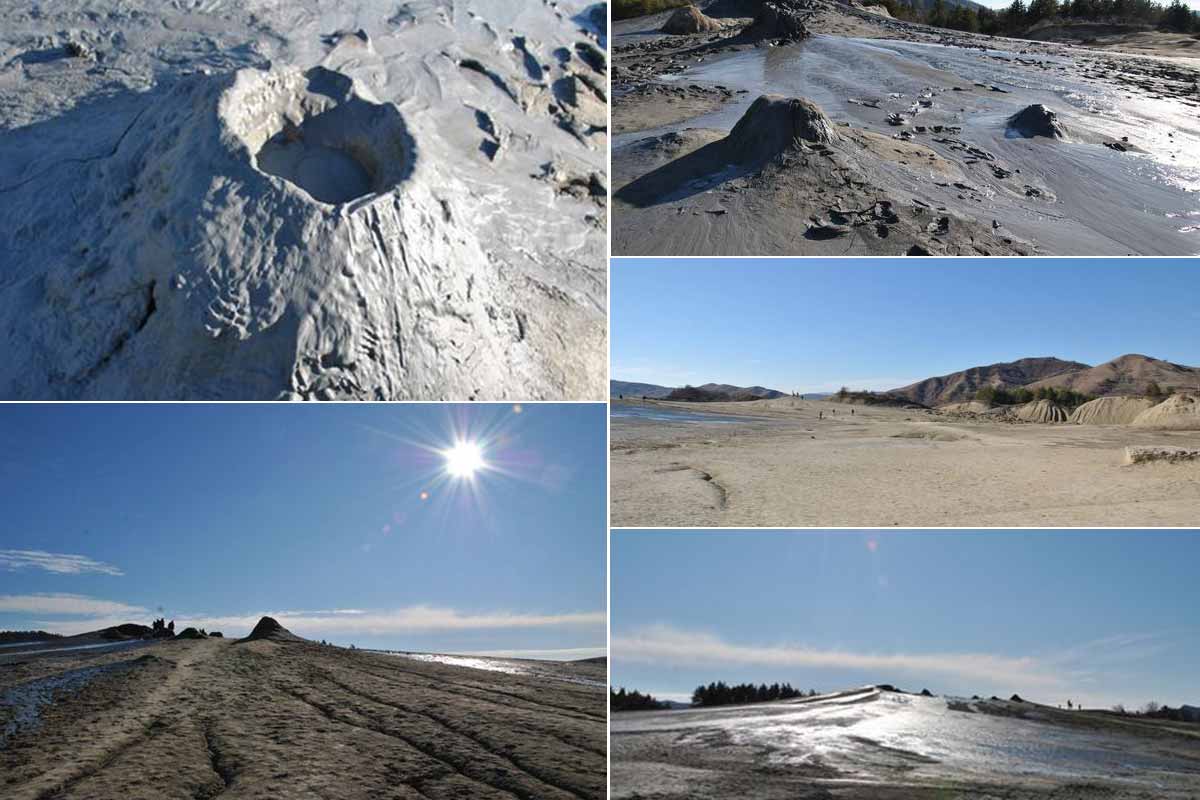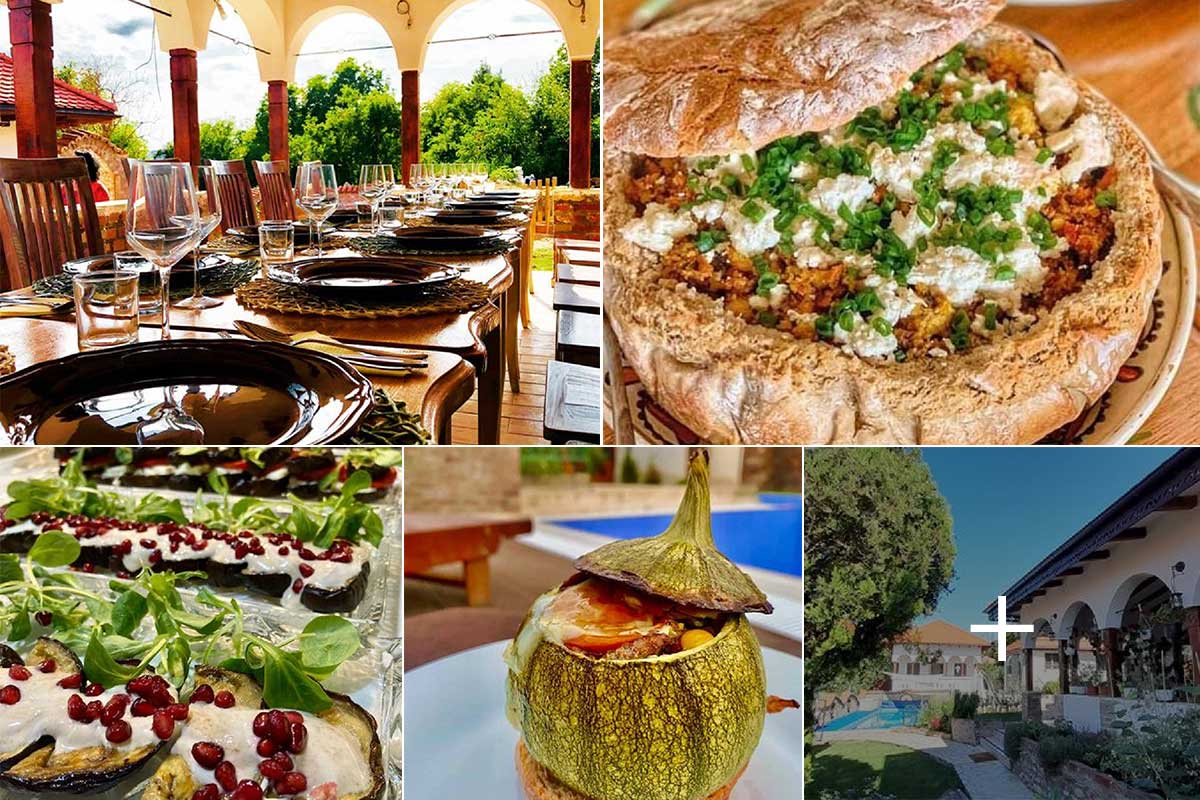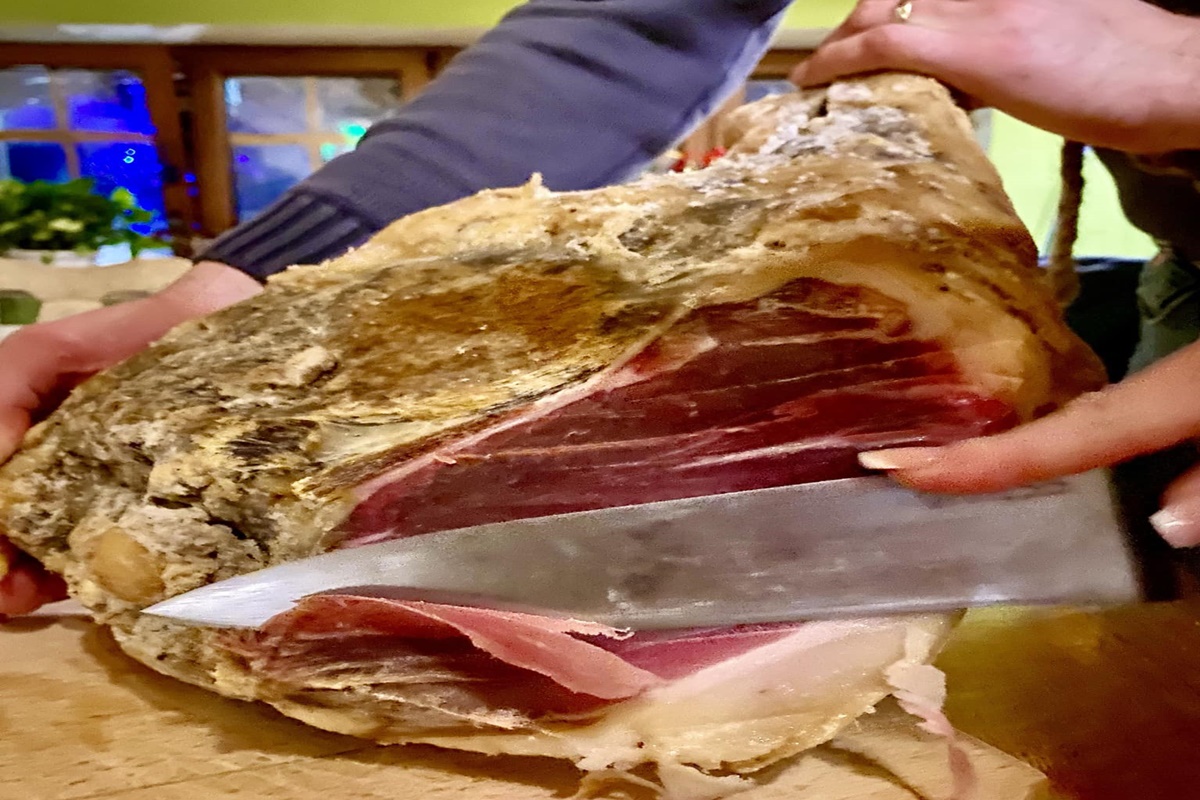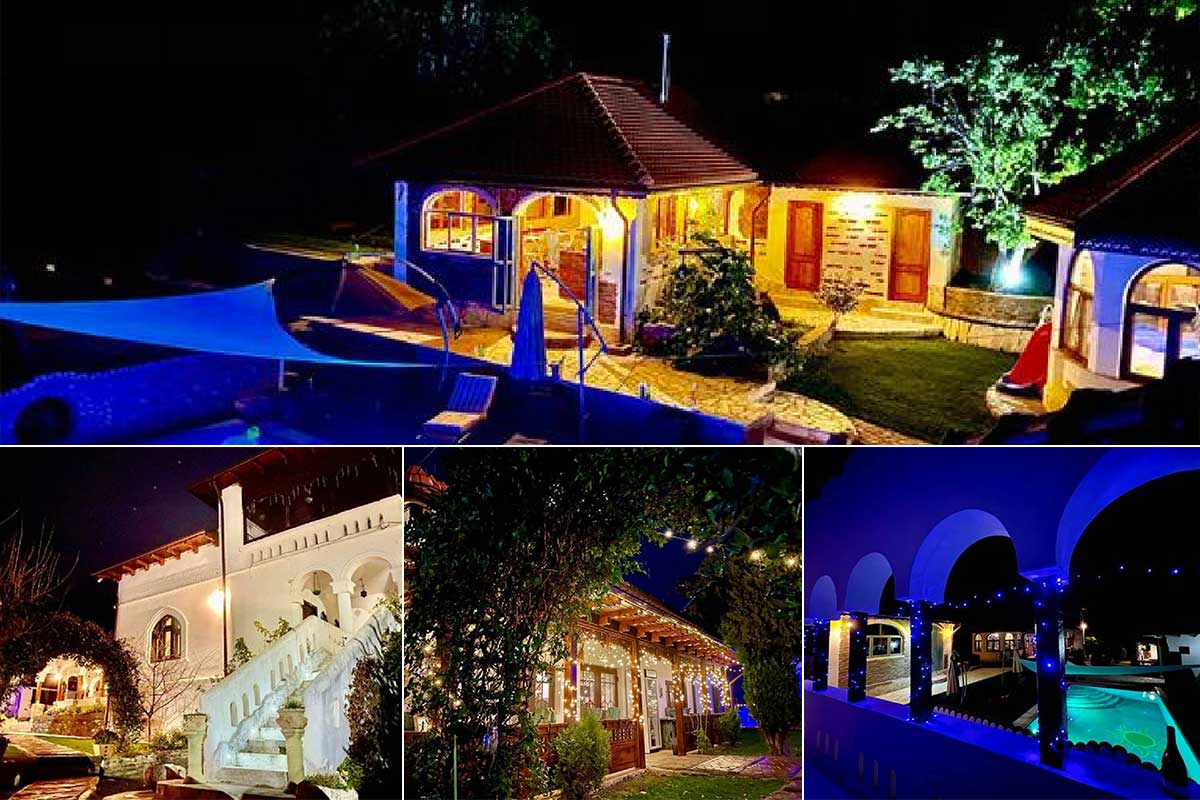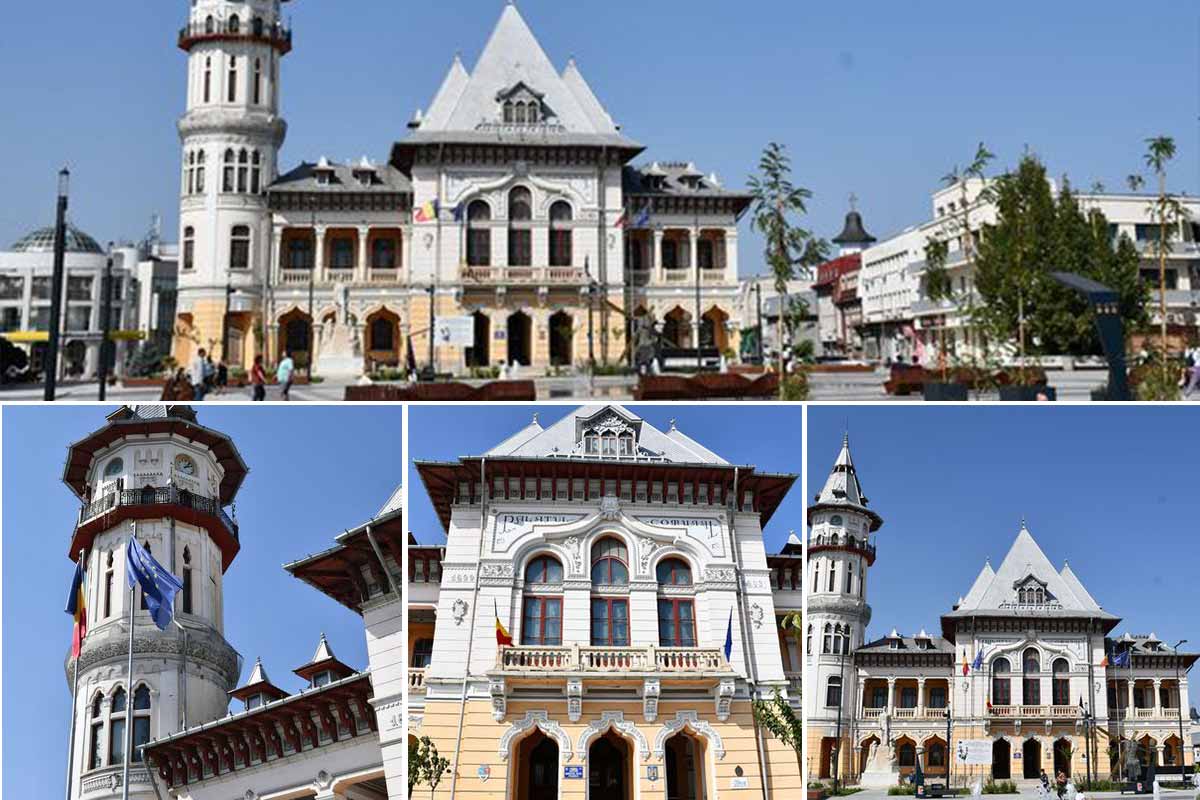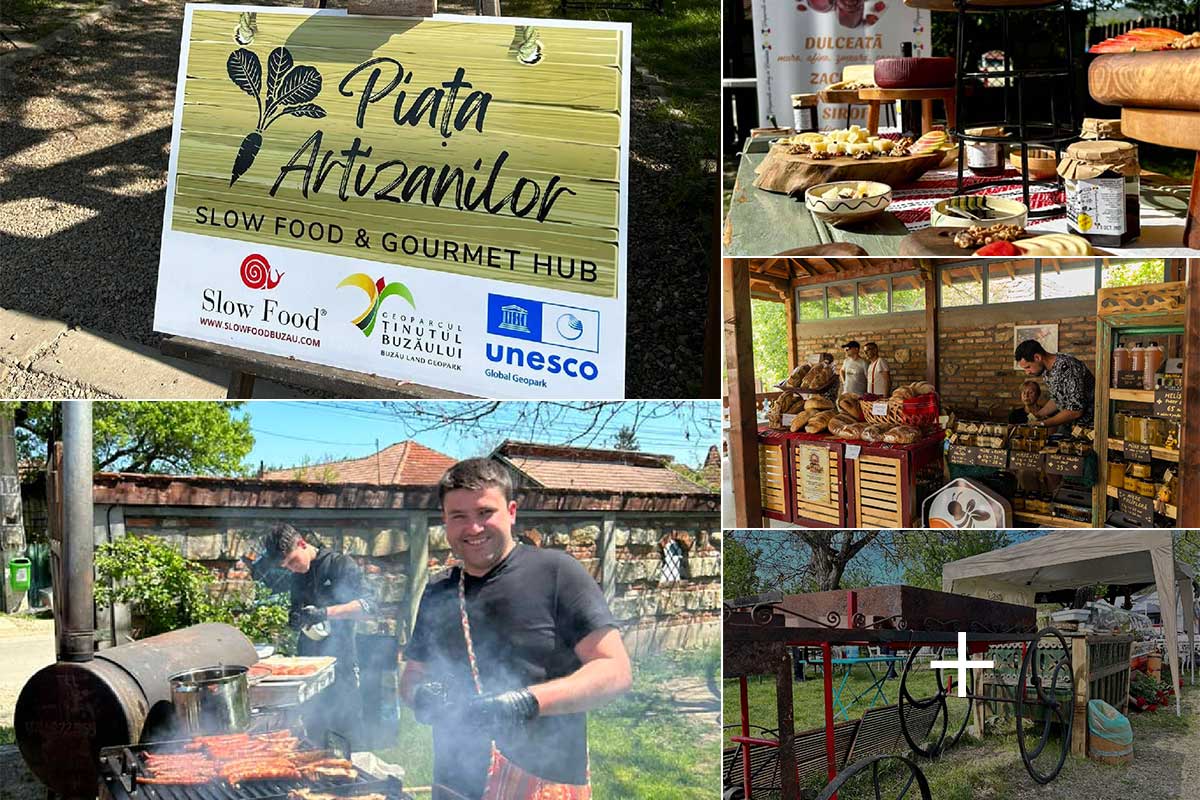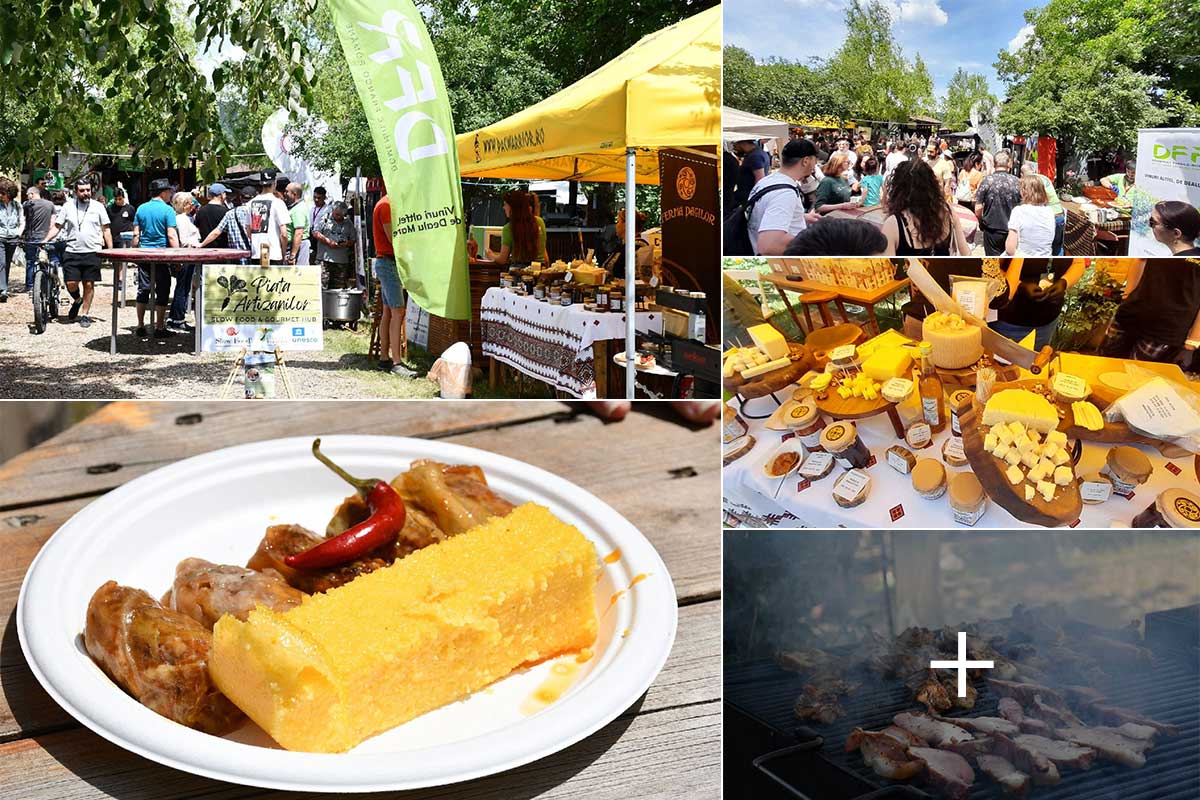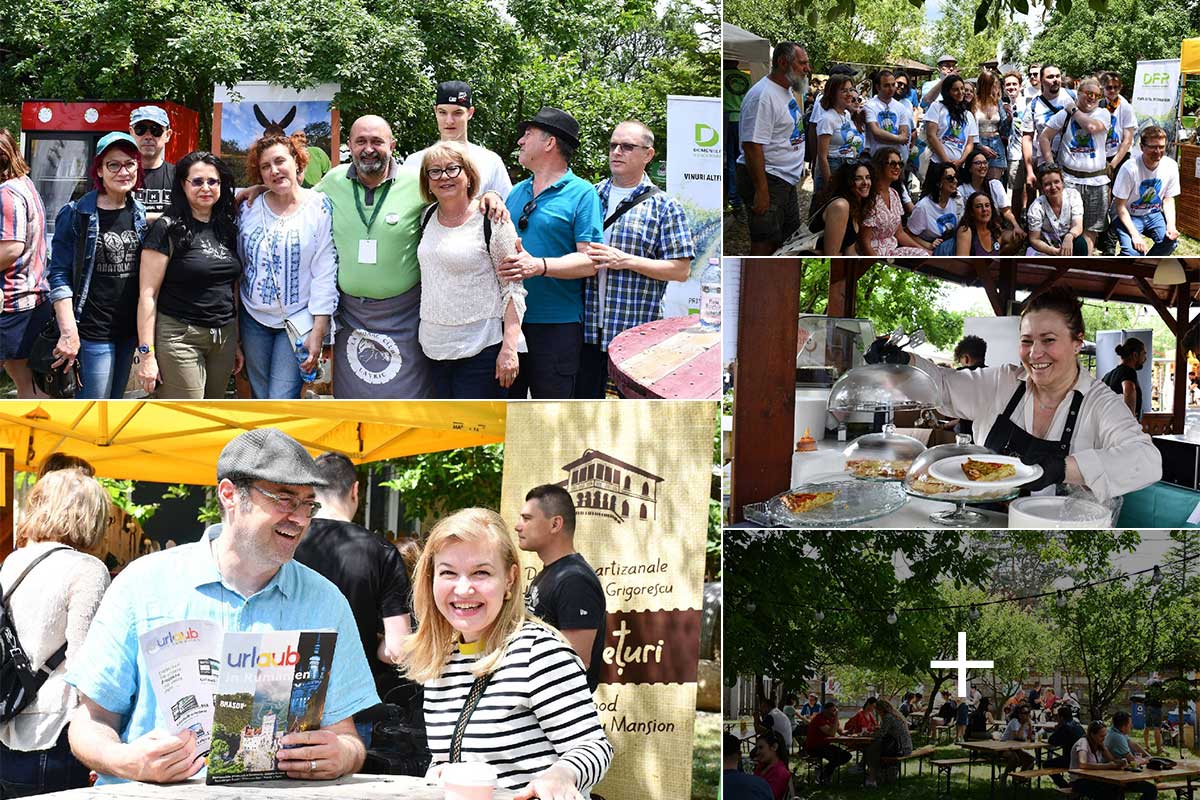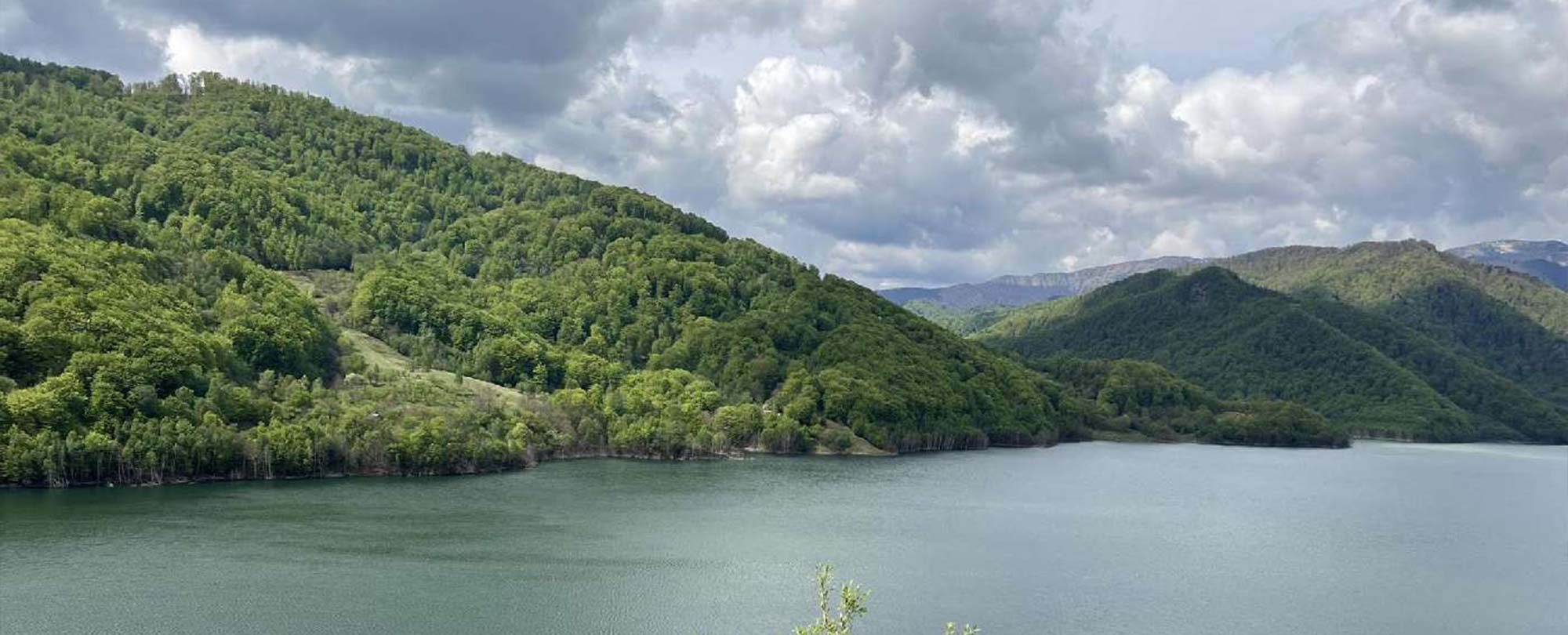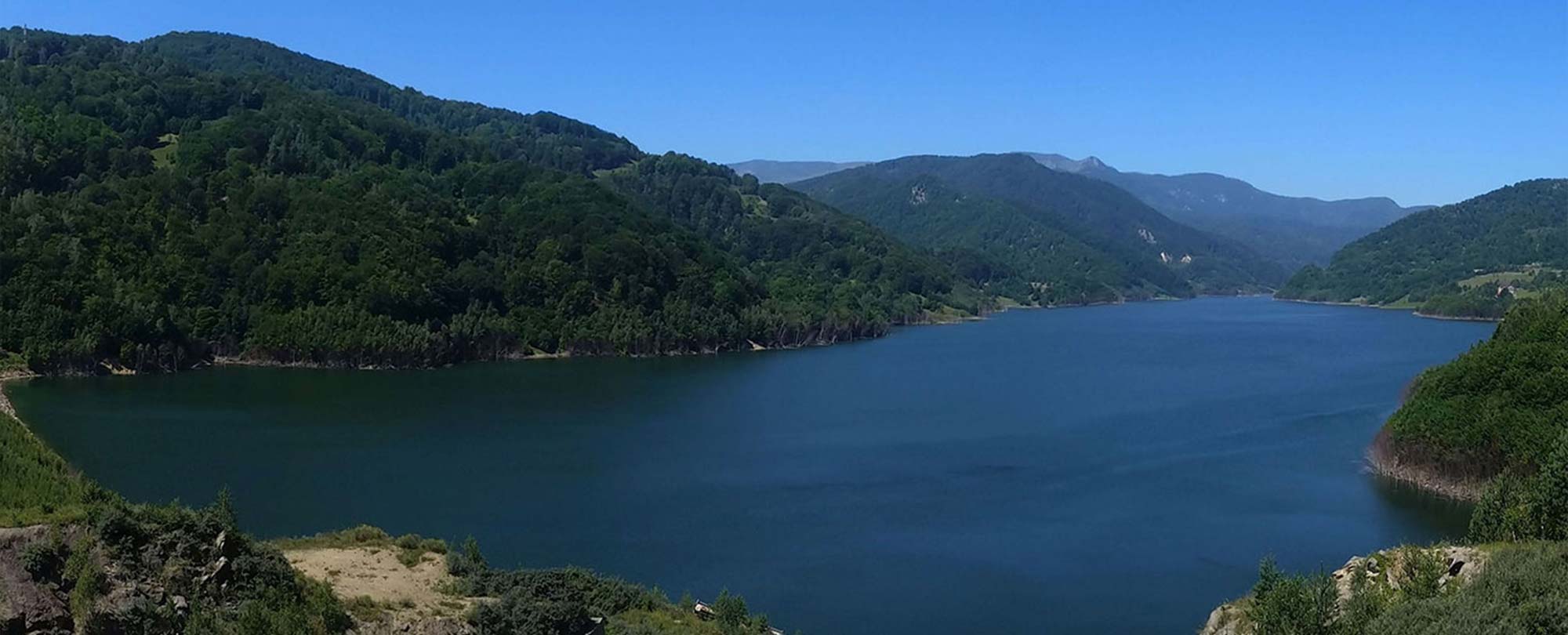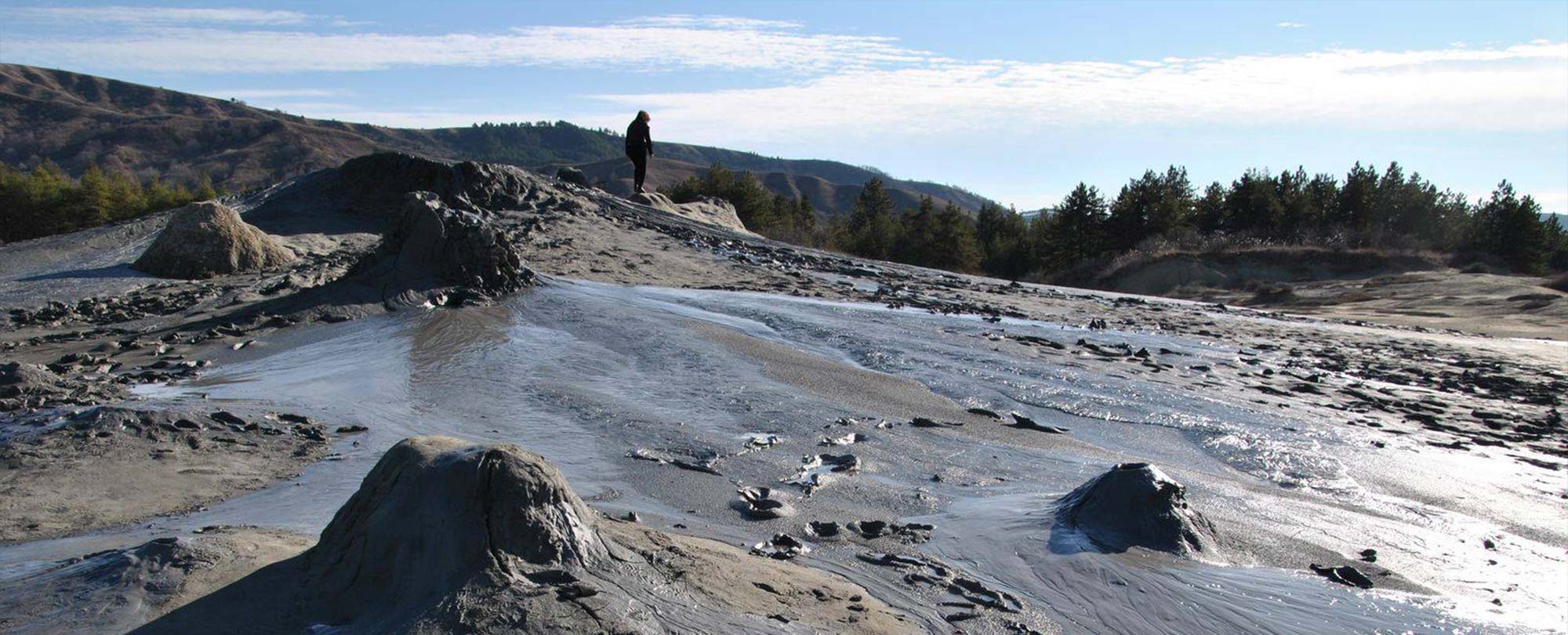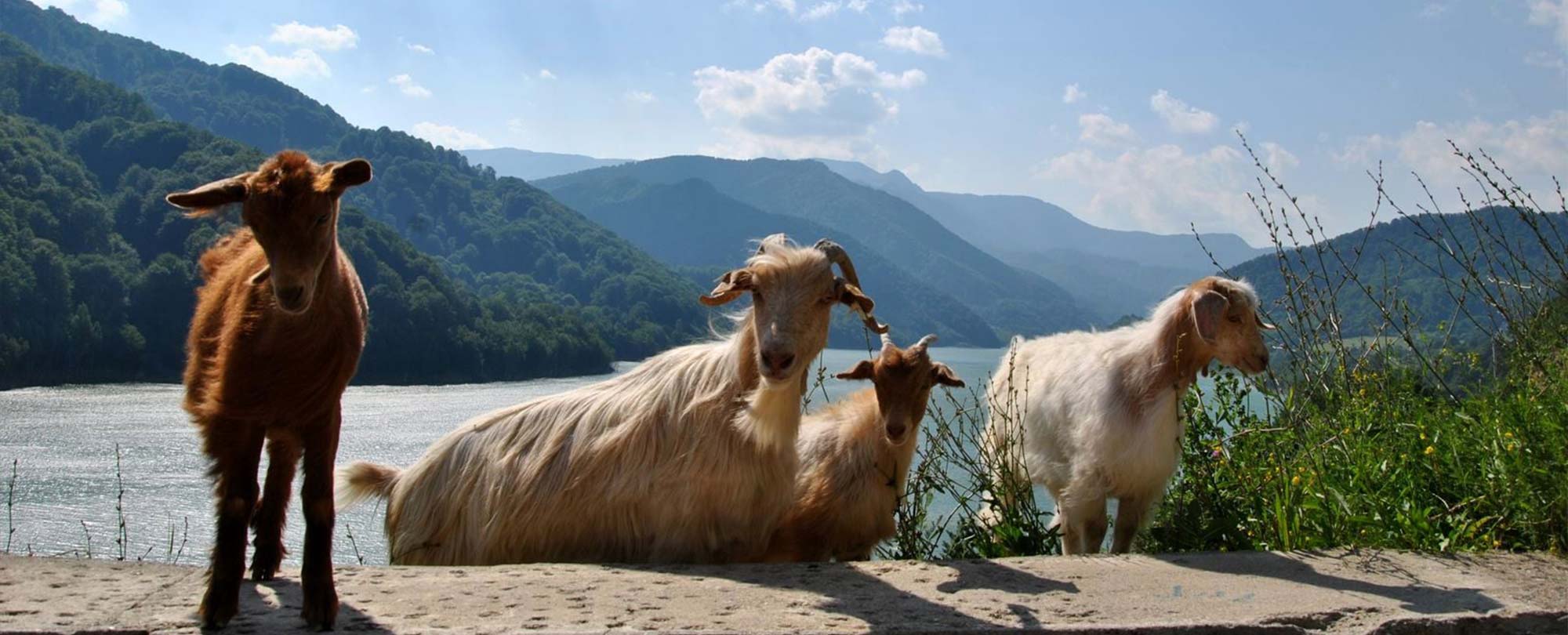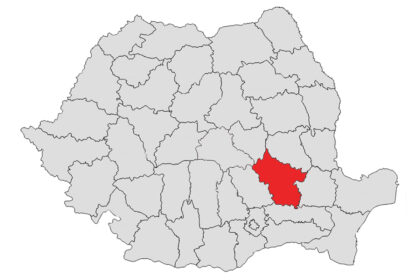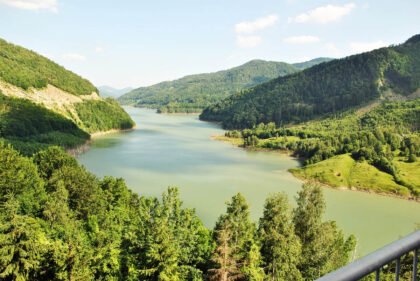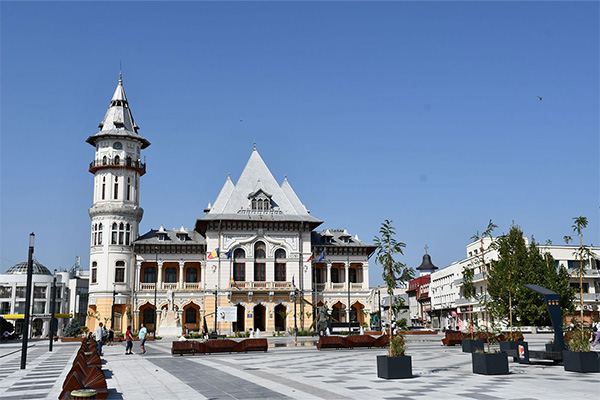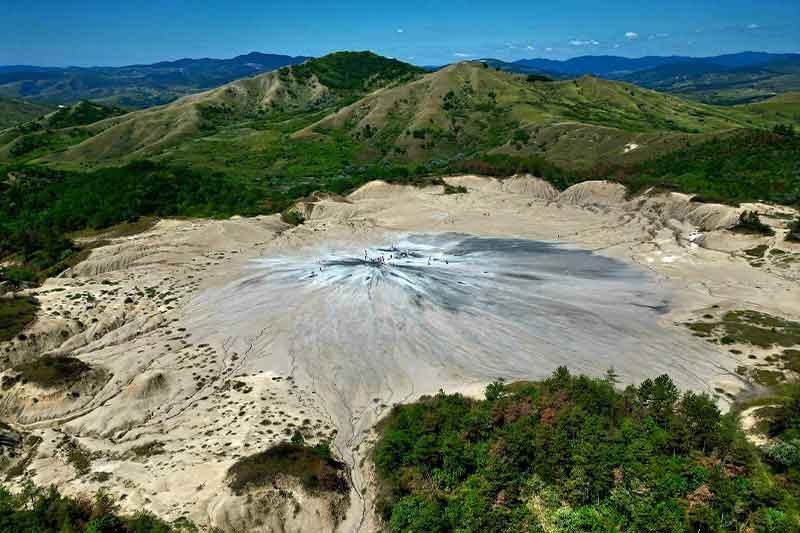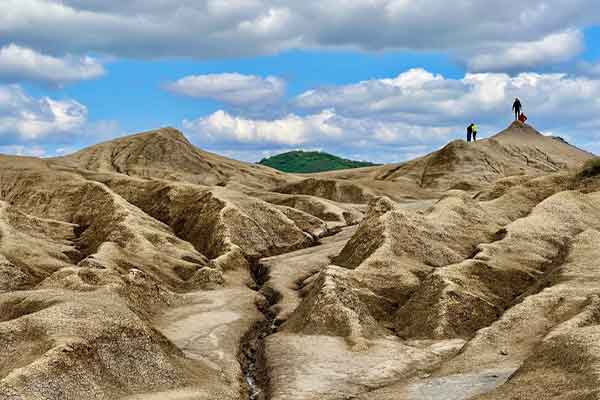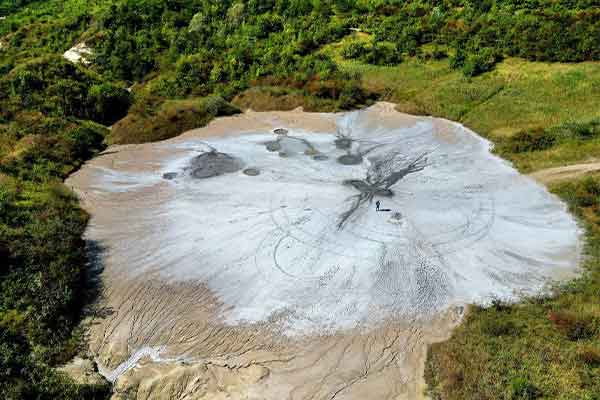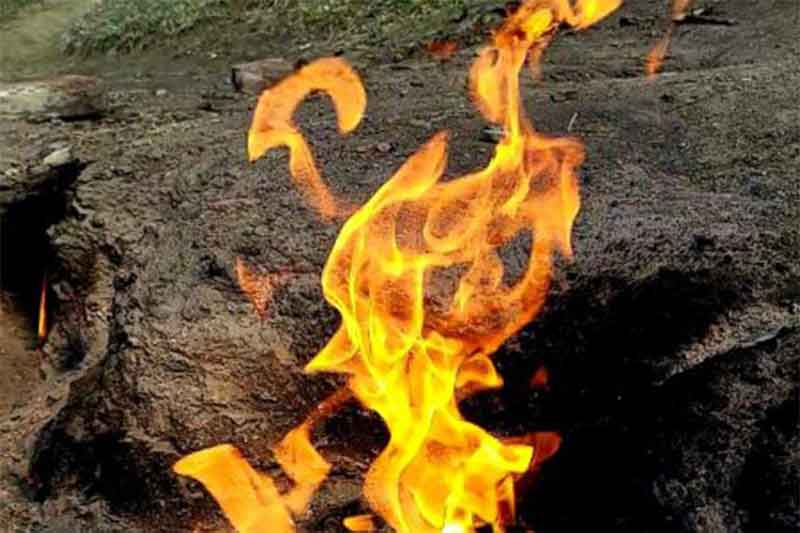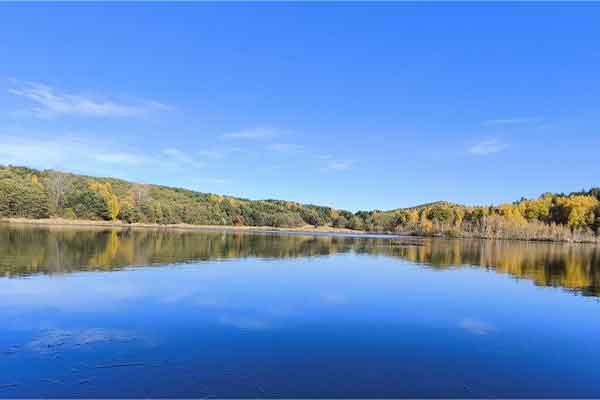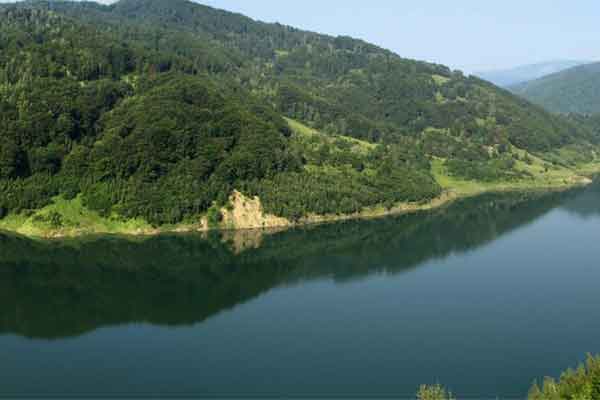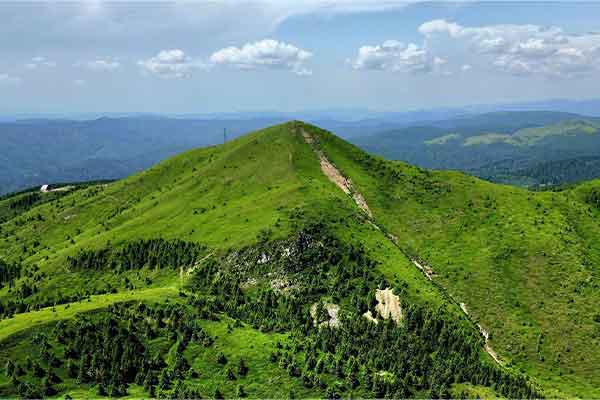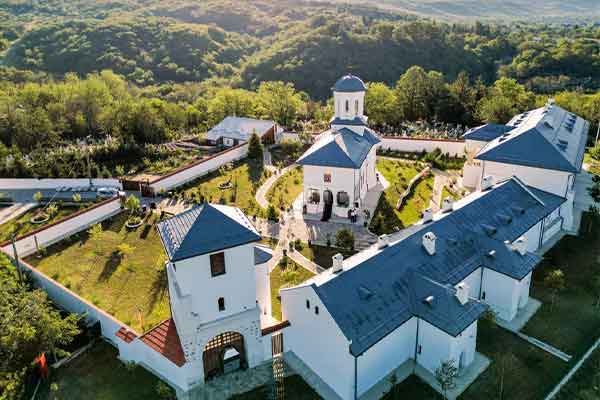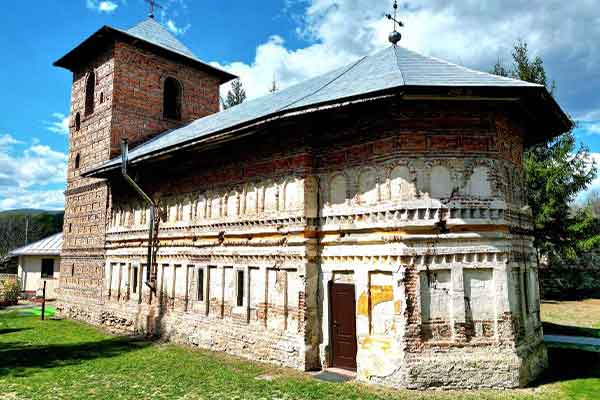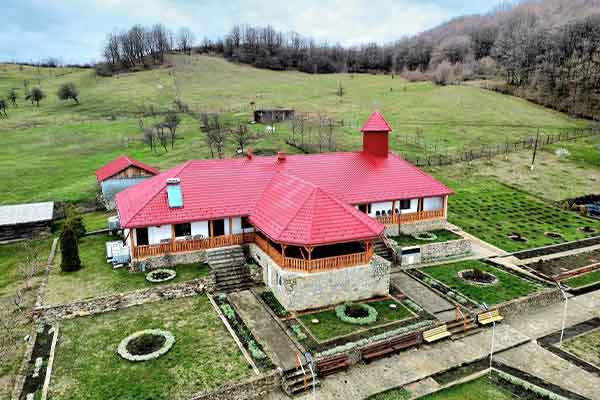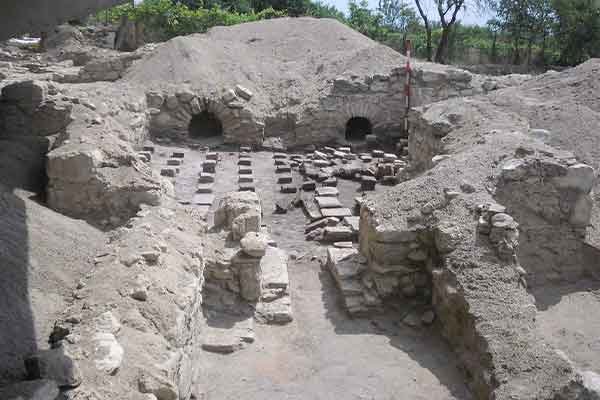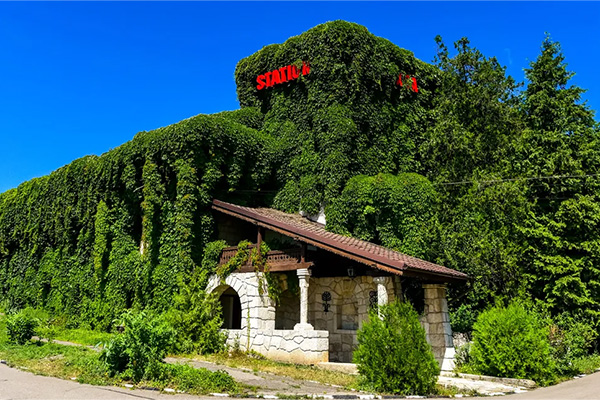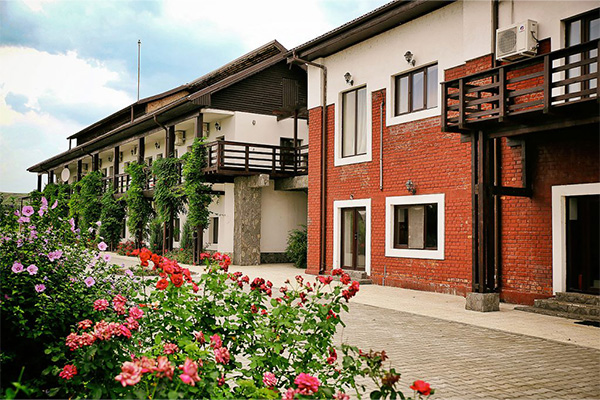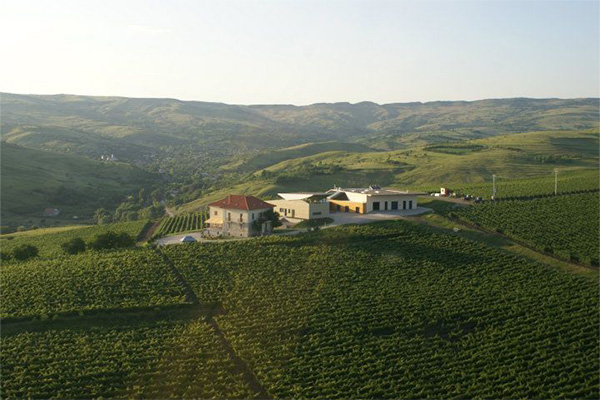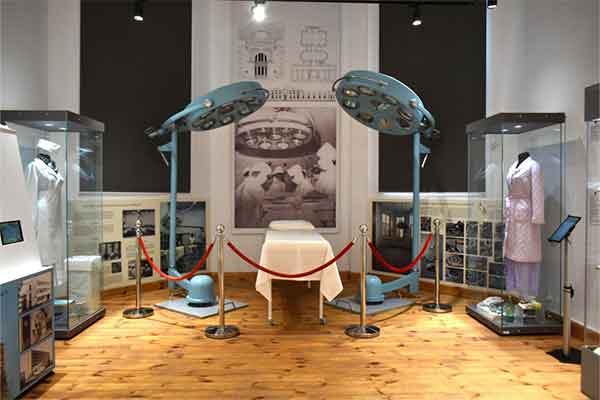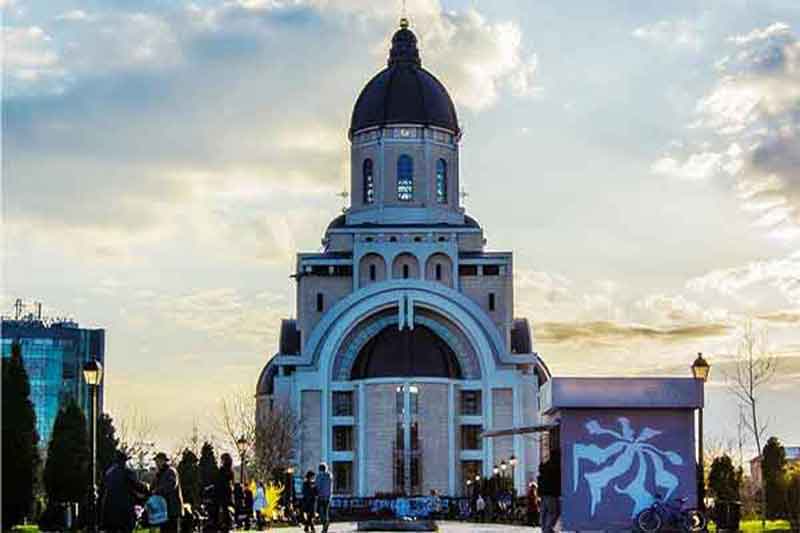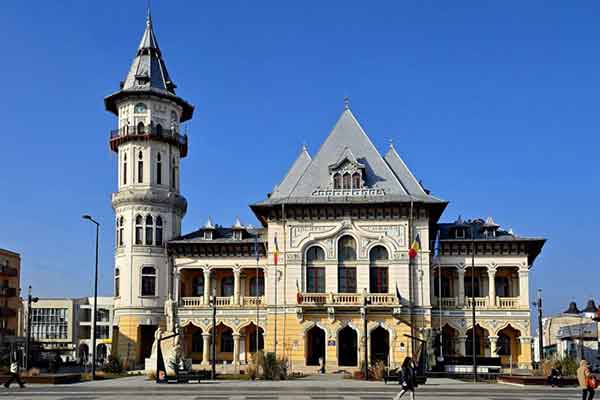Buzău County (Cities: Buzău, Ramnicu Sarat, Nehoiu)
Buzău is a Romanian county in the Wallachia region with the capital of Buzău district. The registration number and common abbreviation for the circle is BZ. Buzău County borders Vrancea County to the north and northeast, Brăila County to the east, Ialomița County to the south, Prahova County to the west and Brașov and Covasna counties to the northwest.
Tourist attractions / Excursion destinations and Recommendations / Activities
Muddy Volcanoes – Paclele Mari | Buzău County
[More around] [Map]
Pâclele Mari is the best known and most visited mud volcano site in Buzău, even if it not as spectacular as the platou of Pacele Mici. Situated in the municipality of Scorțoasa (near Berca), this arid plateau of about 22 hectares hosts numerous active and inactive mud cones. Pâclele Mari is home to the largest mud volcano in Europe – a main “shield volcano” cone, surrounded by many smaller cones.
Muddy Volcanoes – Paclele Mici | Buzău County
[More around] [Map]
“Paclele Mici” is the second major plateau of mud volcanoes in the Scorțoasa commune near Berca, a short distance from “Paclele Mari”. Although less visited, the location is much more spectacular than Paclele Mari.The site covers about 10 hectares and is considered to be the largest field of mud volcanoes in Europe.
Muddy Volcanoes – Beciu | Buzău County
[More around] [Map]
The Mud Volcanoes of Beciu, often also called the “Fierbătorile de la Beciu” are a spectacular site of the phenomenon, located in an isolated area of the Scorțoasa commune (Beciu village), close to the border with the Beceni commune. In contrast to the other volcanoe areas, here the volcanoes appear as mud puddles and the intense eruption activity includes crude oil erupting to the surface.
Living Fire | Buzău County
[More around] [Map]
The Living Fire (also called Eternal Flames) of Lopătari is a spectacular natural phenomenon, located in Buzău county, where natural gases emerge from cracks in the earth and ignite, forming flames that can reach up to one meter high. These flames are colored and, under certain conditions, can burn continuously or go out depending on weather conditions. It is a rare and impressive phenomenon and is particularly visible at night.
Lake Mocearu | Buzău County
[More around] [Map]
Lake Mocearu, located in the commune of Chiliile, at an altitude of 775-800 meters, is a picturesque and wild lake, with an area of about 1 hectare and a depth of 8 meters. Isolated and surrounded by dense forests, the lake attracts with its natural scenery, its special tranquillity and local legends of “underwater eyes”. Although access is difficult due to unpaved roads, the site offers an authentic experience for nature lovers and hikers.
Lake Siriu | Buzău County
[More around] [Map]
Siriu Lake is an artificial lake in the municipality of the same name in Buzău County, Romania. It was created between 1982 and 1994 through the construction of the Siriu dam. The dam was originally planned as an earth dam, but has since been made of concrete to increase its stability and safety. The area around Lake Siriu is a beautiful landscape with forests and mountains, which also makes the region interesting for holidaymakers.
Massif Penteleu | Buzău County
[More around] [Map]
The Penteleu Massif, located in the Buzăului Mountains, is one of the most impressive mountain formations in the Curved Carpathians, dominated by the Penteleu Peak, with an altitude of 1772 m. Declared a nature reserve in 1975 and part of the Natura 2000 site, the massif is a biodiversity and hiking paradise, offering spectacular views of the Carpathians and neighboring villages.
Monastery Berca | Buzău County
[More around] [Map]
The Orthodox monastery near Berca in Buzău County was founded in 1694 by the Cantacuzino family and built in the Brâncovenesc style. As a fortified complex with thick walls, a bell tower, and an inner courtyard, it once also served to protect the monks. The monastery church is dedicated to the Archangels Michael and Gabriel and preserves frescoes from the 17th century.
Monastery Bradu | Buzău County
[More around] [Map]
The Orthodox monastery in Buzău County was first mentioned in documents in 1600 and was built in 1592 under Prince Radu of Afumați in the Brâncovenesc style. The monastery church is dedicated to the Holy Archangels Michael and Gabriel and preserves frescoes from the 17th century. After 160 years, the monastery was reopened in 2023.
Monastery Carnu | Buzău County
[More around] [Map]
This Orthodox monastery in Buzău County was founded in 1546 by Prince Mircea Ciobanu and his wife Doamna Chiajna in the traditional Romanian style. The church, dedicated to the Archangels Michael and Gabriel, is notable for its simple architecture and preserved wall paintings.
Waterfall Pruncea / Casoca | Buzău County
[More around] [Map]
Pruncea Waterfall, also known as Cascada Cașoca, is located in the Podul Calului Massif, on the course of the Cașoca River, about 5 km from Siriu, in the northeastern part of Buzau County. With a waterfall of 5-6 meters, this waterfall impresses by the wildness of the landscape and the associated legends, including the hiding place of the outlaw Gheorghilaș, a former pandur in the army of Tudor Vladimirescu.
The Roman Castrum of Pietroasele | Buzău County
[More around] [Map]
The Roman Castrum of Pietroasele is a fortification built by Emperor Constantine the Great in 332 AD, as part of a campaign to defend Constantinople. Located in Pietroasele, this site was discovered by accident in the 1990s, leading to archaeological research that uncovered Roman baths with a hypocaust system and four Roman necropolises.
Pietroasa Veche Winery | Winery in Buzău County
[More about] [Map]
Established in 1893, Pietroasa Veche Winery operates under the University of Agronomic Sciences and Veterinary Medicine of Bucharest. Located in the Dealu Mare region, it is renowned for producing high-quality wines from traditional Romanian grape varieties, including Tămâioasă Românească, Grasă de Cotnari, and Busuioacă de Bohotin.
Domeniile Franco-Române | Winery in Buzău County
[More about] [Map]
Situated in the renowned Dealu Mare wine region, Domeniile Franco-Române (DFR) holds the distinction of establishing Romania’s first organic vineyard. Founded in 2000 by Denis Thomas, a visionary winemaker from Burgundy, France, the estate has been a pioneer in organic viticulture in the country.
3 Conace Winery | Winery in Buzău County
[More about] [Map]
Situated in the serene hills of Săsenii Noi, Buzău County, Crama Trei Conace is a sanctuary for wine enthusiasts seeking authentic Romanian flavors. The winery crafts two distinguished collections: Memento Mori: This range includes a dry white blend of Sauvignon Blanc and Chardonnay, a dry rosé from Merlot, and a dry red blend of Fetească Neagră and Merlot. Each bottle embodies a harmonious fusion of earth and sky, inviting you to savor the present moment.
Domeniile Săhăteni | Winery in Buzău County
[More about] [Map]
Established in 2003 by renowned oenologist Aurelia Vișinescu and her associate, Steve Cacenco, Domeniile Săhăteni is a family-owned winery nestled in the heart of Romania’s Dealu Mare wine region. The estate spans 82 hectares, cultivating both indigenous varieties such as Fetească Albă, Tămâioasă Românească, and Fetească Neagră, as well as international grapes like Sauvignon Blanc, Chardonnay, Pinot Grigio, Merlot, Syrah, Pinot Noir, and Cabernet Sauvignon.
Lacerta Winery | Winery in Buzău County
[More about] [Map]
Located in the heart of Dealu Mare, Romania’s premier wine region, LacertA Winery offers a unique blend of tradition, innovation, and breathtaking views. Known for its award-winning wines, LacertA combines the finest local terroir with state-of-the-art winemaking techniques to craft exceptional varietals, including Merlot, Chardonnay, Fetească Neagră, and Sauvignon Blanc.
Bratianu Museum Center | Buzău City
[More around] [Map]
The “I.C. Brătianu” Museum Center in Buzău is dedicated to the medical and cultural history of the city, housed in a historical building that once served as a surgical and military hospital. Following an extensive restoration project funded by the European Union, the museum now hosts permanent and temporary exhibitions showcasing the evolution of medicine in Buzău and the contributions of local cultural and medical figures.
The Ascension of the Lord Church | Buzău City
[More around] [Map]
This Orthodox church is an important example of Romanian religious architecture, with Byzantine influences. Its interior is decorated with old frescoes and icons, and its spiritual role is reflected in the life of the local community. It is a place of prayer and meditation, preserving Christian traditions alive in the area.
Communal Palace | Buzău City
[More around] [Map]
The Communal Palace of Buzău is an architectural symbol of the city, built between 1899 and 1903 under the leadership of Mayor Nicu Constantinescu. Designed by architect Alexandru Săvulescu, this palace was inaugurated in the presence of King Carol I and Prince Ferdinand. Until its partial destruction in a fire in 1944, the palace hosted important events and was considered a masterpiece of architecture, with Venetian ornaments and Carra stone columns.
Facebook PostsView all Facebook posts!

